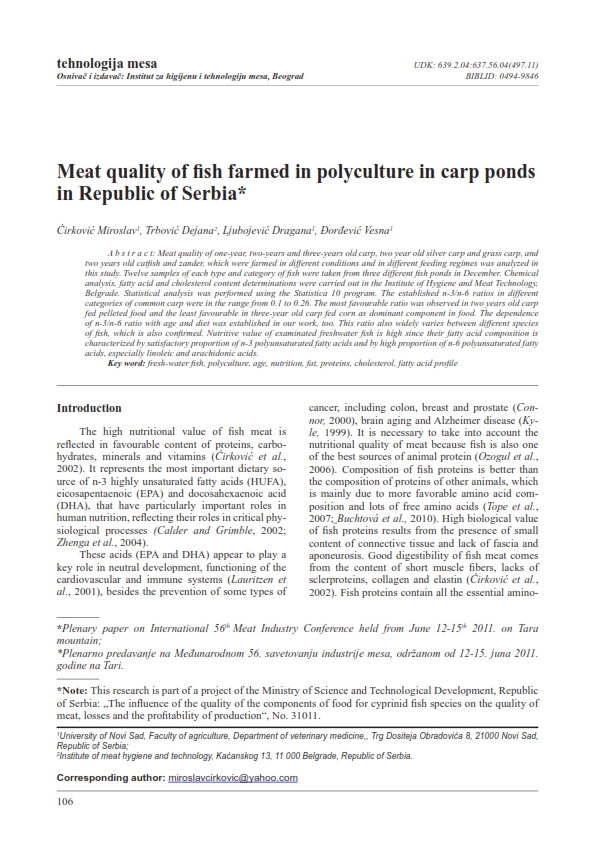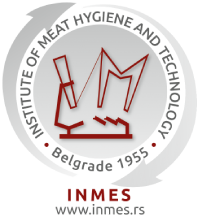Meat quality of fish farmed in polyculture in carp ponds in Republic of Serbia
Abstract
Meat quality of oneyear, twoyears and threeyears old carp, two year old silver carp and grass carp, and two years old catfish and zander, which were farmed in different conditions and in different feeding regimes was analyzed in this study. Twelve samples of each type and category of fish were taken from three different fish ponds in December. Chemical analysis, fatty acid and cholesterol content determinations were carried out in the Institute of Hygiene and Meat Technology, Belgrade. Statistical analysis was performed using the Statistica 10 program. The established n3/n6 ratios in different
categories of common carp were in the range from 0.1 to 0.26. The most favourable ratio was observed in two years old carp fed pelleted food and the least favourable in threeyear old carp fed corn as dominant component in food. The dependence of n3/n6 ratio with age and diet was established in our work, too. This ratio also widely varies between different species of fish, which is also confirmed. Nutritive value of examinated freshwater fish is high since their fatty acid composition is characterized by satisfactory proportion of n3 polyunsaturated fatty acids and by high proportion of n6 polyunsaturated fatty
acids, especially linoleic and arachidonic acids.





